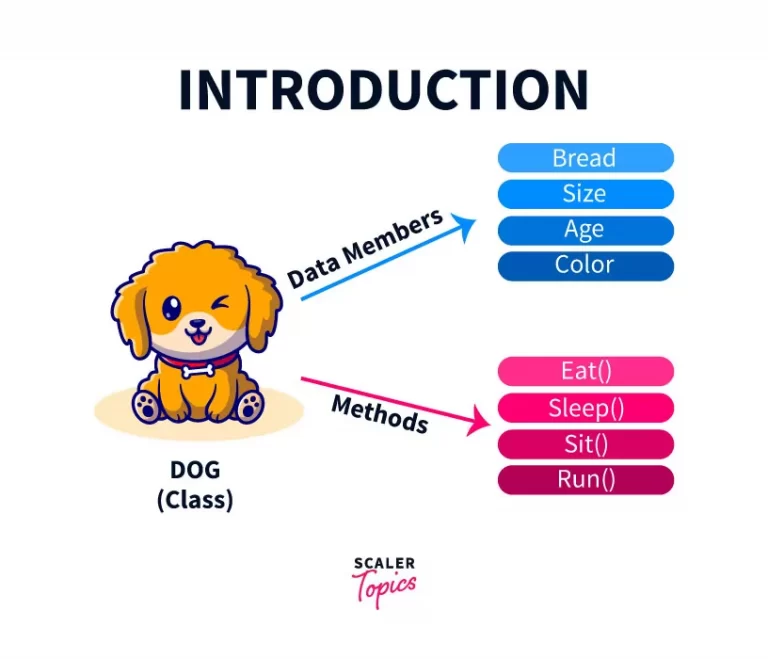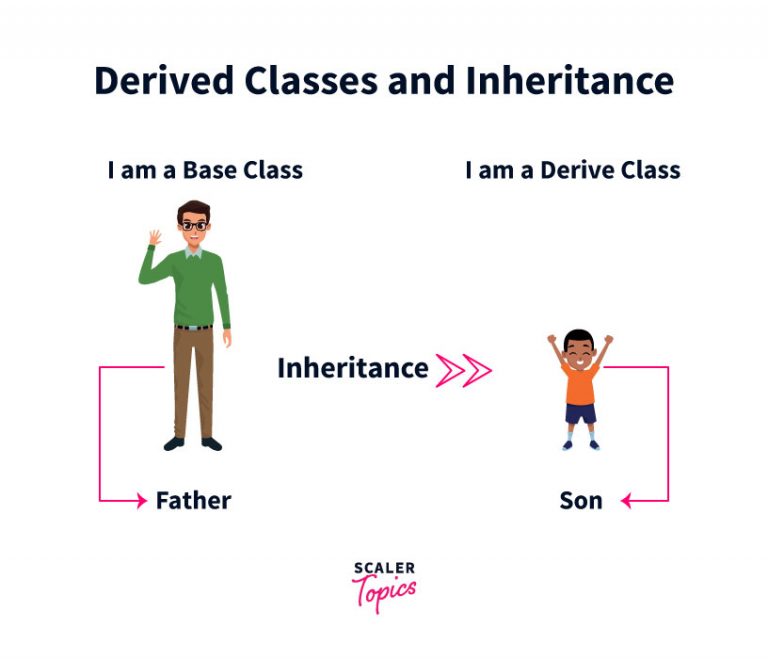Difference Between Class and Object
Learn via video course

Overview
A class is a blueprint which defines properties and behaviour of similar objects or entities. Each object is an instance of a class which has those properties and behaviors associated with them.
When classes are defined, no memory is allocated to them as these classes are merely a concept or user-defined data type. However, when we create objects of these classes, memory is allocated in the heap.
Scope
The article aims to:
- Explain the general concept of classes and objects.
- Discuss the major differences between class and object.
- Explain the uses of class and object in OOPs.
Introduction
Object-Oriented Programming is built on the idea of objects and classes. Any entity with a state and behavior is an object. The state of an entity tells us about its type or value, but its behaviour tells us about the actions or activities it can do.
Let’s have a look at real-life concepts:
For example dogs have states or data members like colour, breed and the behaviour or methods (actions it can perform) are barking, wagging tail, eating, sleeping, etc.

Now, let’s see in detail about classes and objects.
What is Class?
A class can be understood as a template or a blueprint, which contains some values, known as data members, and some set of rules, known as behaviors or methods. The data and methods that are defined in the class are automatically taken when an object is created. The class is a template or blueprint for objects. One can make as many objects as they want to be based on a class.
For example, the template for the car is created first after that multiple units or objects of cars can be created based on the template. And each of the objects must have the data and methods mentioned in the blueprint.
A class is a set of traits and features that define an object. It is a blueprint which must be implemented by each of its objects.
For example: If we define a blueprint of human beings then it can have attributes like Name, Age, Gender, Occupation and functionalities like Walk(), Eat(), and Sleep(). Any human being must have these properties(data) and functionalities(methods) associated with them.

What is an Object?
A class contains the properties and behaviour for a set of objects, many objects can be formed using a class.
- Take the example of a dog as an object.
- There are different varieties of dogs that means different varieties of objects according to the dog class. For example, one dog has black color, another dog may have grey color, or white, etc.
- However, we can notice that most of the behaviours are the same like barking, wagging their tail, eating, sleeping, etc.
- Properties and behaviour of these objects can be the same but their values would be different.
Syntax to create an object:
Class vs Object
| Class | Object |
|---|---|
| A class is a blueprint for declaring and creating objects. | An object is a class instance that allows programmers to use variables and methods from inside the class. |
| Memory is not allocated to classes. Classes have no physical existence. | When objects are created, memory is allocated to them in the heap memory. |
| You can declare a class only once. | A class can be used to create many objects. |
| Class is a logical entity. | An object is a physical entity. |
| We cannot manipulate class as it is not available in memory. | Objects can be manipulated. |
| Class is created using the class keyword like class Dog{} | Objects are created through new keyword like Dog d = new Dog();. We can also create an object using the newInstance() method, clone() method, fatory method and using deserialization. |
| Example: Mobile is a class. | If Mobile is the class then iphone, redmi, blackberry, samsung are its objects which have different properties and behaviours. |
Example of Class and Object
Let’s take an example of Sign Up page for better understanding:

This page contains many options, like First Name, Last Name, Email, and Password. This is an example of blueprint. We can fill-in various values and accordingly various objects of this blueprint will be generated. When we fill these fields and click on Sign Up, a new object of this blueprint is created in the database.
We can create a class that represents this blueprint. The properties of this class are the various fields of this form.
When we create an object of this class, we can assign values to these properties as shown below:
Types of Class

Derived Classes and Inheritance
A derived class has been generated or derived from another class. Its purpose is to improve the functionality of the base class. This sort of class derives properties from other classes and inherits them.
Example: Let’s take an example of a child and parents, a child has all the properties of a father.

Subclasses
A class that inherits its properties from another class is referred to as a subclass. The class from which properties are inherited is called the superclass.

Bird, Fish, and Dog are all the subclasses of the superclass Animal. Each of the three classes: Bird, Fish and Dog have some common properties like they have mouth, eyes, etc. There are common behaviors as well like they can move, generate sound, etc.
We can combine these common properties and behaviors to form a new class of that of Animal in general.
Superclasses
A superclass is a class from which numerous subclasses can be derived.
In the above example, Animal is the superclass and Bird, Dog, and Fish are the subclasses.
Uses of Class and Object
Uses of Class
- A class is a way to arrange data and behavior information. It is a template that must be implemeted by its objects.
- A class can also be seen as a user-defined data type where any object of defined data type has some predefined properties and behaviors.
Why is class used to arrange data-related information?
Objects can be thought of as self-contained black boxes since they include both data and methods that operate on data. This functionality makes reusing code in new systems simple.
How is class used to create user-defined objects?
We’ll make a time class to represent the time of day. A Time object contains data for an hour, a minute, and several seconds. Because these values are present in every Time object, we require instance variables to store them.
Why is class used to create user-defined objects?
One typical reason for defining an object type is to encapsulate related data in an object that can be regarded as a unit. Instead of declaring a few variables, we can declare a class which has those properties defined inside it. Now, we can create an object of the class which will have those variables associated with it.
For example, in the code above, to represent time, we have created three variables: hour, minute and second. Now, if we want to create two time instances, we can do so using six variables: hour1, minute1, second1 and hour2, minute2, second2.
Instead of doing this repetitive task, we can create a class with the three properties and create objects of that class: t1 and t2 as implemented in the code.
How is class used to inherit properties from other classes?
Explanation:
Here the Programmer class extends the properties of Employee class and adds one more property to it namely bonus. A programmer has all the attributes of an employee plus bous attribute.
Why is class used to inherit properties from other classes?
It ensures a code’s reusability. We don’t have to write the same code again and over. It also allows us to add new features to an existing class without modifying them. As shown in the example above, we have created a new class Programmer which extends the properties of Employee class without changing the Employee class.
Uses of Object
- Objects represent a real-world entity that you’re trying to deal with.
- Object can be used to access a piece of memory using an object reference variable.
- It’s used to hold, manipulate, and reference the data.
- For performing some desired tasks, objects use methods defined inside the class.
Conclusion
- Class is a blueprint which defines some properties and behaviors. An object is an instance of a class which has those properties and behaviours attached.
- A class is not allocated memory when it is defined. An object is allocated memory when it is created.
- Class is a logical entity whereas objects are physical entities.
- A class is declared only once. On the other hand, we can create multiple objects of a class.
- We can create a class using the class keyword. Objects can be created in many ways such as using the new keyword, newInstance() method,clone() method, factory method and deserialization.
